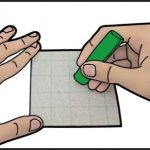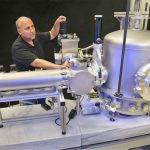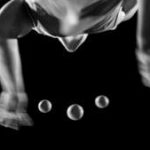These low-cost, Invisible solar Cells will also be Spray-Painted On the rest
The sunlight cells can be rolled up like wallpaper and then unrolled onto any surface Most sunlight panels, made of costly electronics encased in glass, are awkward to make use of anyplace rather than a rooftop or sun farm. but within the close to future, spray-on solar cells will be capable of turn almost anything else—from cars, to patio furnishings, to plane wings—into mini energy crops. Researchers at the university of Toronto have figured out learn how to make the method each low-cost and quick. mild-sensitive dots, so tiny they’re invisible to the attention, may also be sprayed onto a flexible film and then wrapped on anything with access to sunlight.

“We begin with something like an ink, so it can be deposited the use of really cheap manufacturing methods, as opposed to traditional sunlight panels, which can be made using the microelectronics trade version,” says Illan Kramer, a publish-doctoral fellow who works for a lab on the university of Toronto through a partnership with IBM.
After an answer stuffed with the nano-sized solar cells is printed on a versatile film, it can be rolled up and carried away to wrap on anything else. “They wind up like a roll of wallpaper you could buy from a ironmongery store,” Kramer explains. “Then it is advisable unroll them and mount them on any surface you adore.” though the person cells are invisible, the printing process creates a dark surface, so this would not be the roughly thing that may be used on home windows, not like another spray-on sunlight tasks. however Kramer argues that windows are not the perfect situation to place sun panels anyway—due to the fact that you’re either limiting light in a room or no longer generating so much energy. “We wish to take in as so much daylight as conceivable, and we need to create as a lot electricity as that you can imagine,” Kramer says. The spray-on sunlight cells, which the researchers says will be ready for the market in 5 to 10 years, aren’t yet as efficient as traditional solar panels. the current prototype of the spray-on sun cell only converts eight.1% of sunlight to power, compared to 15%-20% for most typical rooftop panels. but Kramer says that may not be a problem: “We’re working on making them extra efficient, however we call to mind ourselves as working in a quite totally different paradigm, the place we should not have to be moderately as efficient as a result of we’re a lot inexpensive.”
(125)














